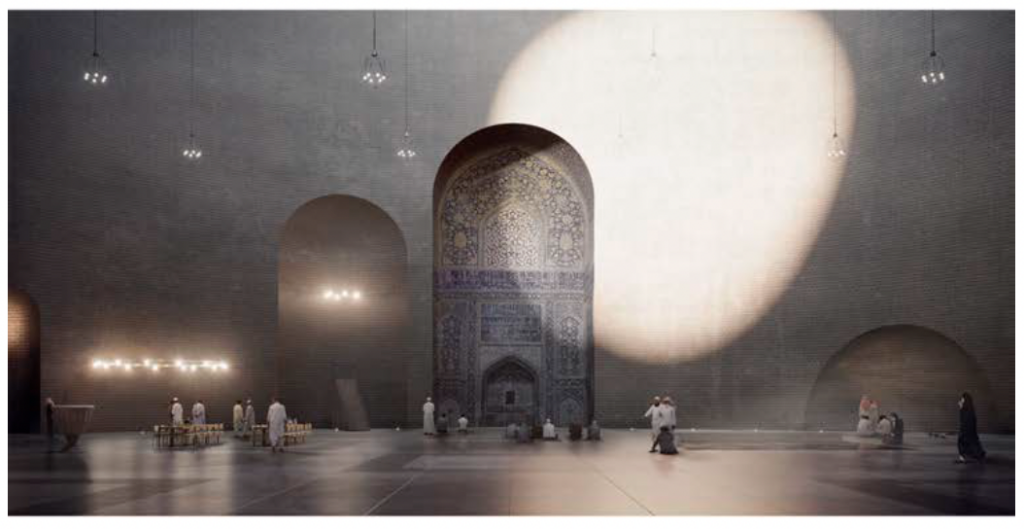Eduardo Delgado Orusco
University of Zaragoza, Spain
edelgado@unizar.es
Introduction
«We have inherited a large house, a great ’world house’ in which we have to live together – black and white, Easterner and Westerner, Gentile and Jew, Catholic and Protestant, Muslim and Hindu – a family unduly separated in ideas, culture and interest, who, because we can never again live apart, must learn somehow to live with each other in peace».1
— Martin Luther King
The project is posed as a longing, a utopia if you want.
But it can also be read as the consequence of understanding that the three great monotheistic religions pray to the same God. The project proposes the desirable approach of the faithful through the experience of the same common space, capable, broad, open and where it is possible to share experiences and celebrations.
An analogous project, perhaps less ambitious but very commendable, has already been rehearsed in the city of Berlin, “The House of One”.2 In that case the three temples were affirmed
– synagogue, church and mosque – isolated from each other and only united by a large common space but external to the three.
Our proposal goes further: one God, one space. This project needs to overcome fears, develop trusts, give up rules, dream a common prayer that will be received by that one God.
The space – the project – is presented with a clear geometry and full of symbolism. Its sacred character – that is, segregated from the mundane and offered to God – is represented with a compact and ideal architecture. The access threshold is unique and broken, a preparation. The interior is tremendously bright, with a light coming from Heaven through a unique skylight, which takes advantage of geometric conditions, to offer its own lighting – although at the same time shared – to each of the areas of the complex. Each religion has its specific spaces within a particular area, but not closed.
Those spaces are carved into the wall, but open to the common space in a kind of invitation. The material – the building – is understood as the institution, the interior space is the life of men. The more to the center, the more human, the more common.3

Copyright holders: Eduardo Delgado Orusco

Copyright holders: Eduardo Delgado Orusco

Copyright holders: Eduardo Delgado Orusco



Copyright holders: Eduardo Delgado Orusco
1 Martin Luther King, Jr., Where Do We Go From Here: Chaos or Community? (Boston: Beacon Press, 1967),167.
2 Gregor Hohberg & Roland Stolte, The House of Prayer and Learning: Designs for the Sacred Building of Tomorrow (Berlín:DOM Publishers, 2013) https://house-of-one.org/en.
3 «Knead clay into vessels, the original empty space makes the use of vessel.(…) So the things that are made are only conditions, What [we] are using is still the original empty space». Lao Tse, Tao Te Ching (Madrid: Edaf), chapter 11.



